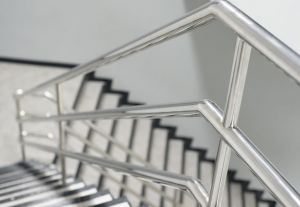Strength Considerations in Stainless Steel Railings
Stainless steel railings are favored for their durability, aesthetic appeal, and minimal maintenance requirements. However, beyond these benefits, one of the most crucial factors to consider in their design and installation is strength. Proper strength considerations ensure that the railing system is not only beautiful but also safe and functional.
1. Material Selection
1.1. Grade of Stainless Steel:
Stainless steel comes in various grades, each offering different levels of strength and corrosion resistance. Grades 304 and 316 are mostly used for railing systems. Grade 316 is particularly recommended for outdoor and marine environments due to its superior resistance to corrosion from salt and other harsh conditions.
1.2. Thickness and Diameter:
The thickness and diameter of the stainless steel components play a significant role in the overall strength of the railing system. Heavier posts and rails can support greater strength and durability. When selecting materials, consider the expected load and usage of the railing system to determine the appropriate dimensions.
2. Structural Integrity
2.1. Support Spacing:
Proper spacing of posts and balusters is critical for maintaining the structural integrity of the railing system. Posts should be spaced to provide adequate support and prevent excessive deflection. Typically, posts are spaced 4 to 6 feet apart, but this can vary based on the specific design and load requirements.
2.2. Connection Points:
The connections between various components of the railing system, such as where the handrail meets the posts or where the posts are anchored to the base, are potential weak points. Use high-quality fasteners and ensure proper installation techniques to maintain strength at these critical points.

3. Installation Considerations
3.1. Anchoring and Fastening:
The method used to anchor the railing posts to the floor or wall significantly impacts the system’s strength. For concrete surfaces, use appropriate anchors designed for heavy loads. For wooden surfaces, ensure the fasteners penetrate deeply into the structural members to provide secure anchoring.
3.2. Welding and Joints:
Professional welding techniques and thorough inspection of welds are necessary to avoid weak spots. In some cases, mechanical joints may be used, but these should also be designed for strength and stability.
3.3. Compliance with Codes:
Ensure that the railing system complies with local building codes and standards, which specify minimum strength and load-bearing requirements for safety. These codes often dictate the height, spacing, and strength of railings in different applications.
4. Environmental Factors
4.1. Corrosion Resistance:
While stainless steel is naturally resistant to corrosion, environmental factors such as saltwater, industrial pollutants, and extreme weather conditions can still affect its integrity. Choose the appropriate grade of stainless steel and consider additional protective coatings in harsh environments.
4.2. Thermal Expansion:
Stainless steel expands and contracts with temperature changes. In areas with significant temperature fluctuations, this can impact the strength and stability of the railing system. Design the system to accommodate thermal expansion, ensuring that joints and connections can handle these movements without compromising strength.
By carefully selecting materials, ensuring structural integrity, following proper installation techniques, and accounting for environmental factors, you can create a railing system that is not only aesthetically pleasing but also robust and safe. Compliance with building codes and regular maintenance further enhance the durability and reliability of stainless steel railings, making them a sound investment for both residential and commercial applications.

 +86 159 6420 9667
+86 159 6420 9667  sales@haxrailing.com
sales@haxrailing.com 



